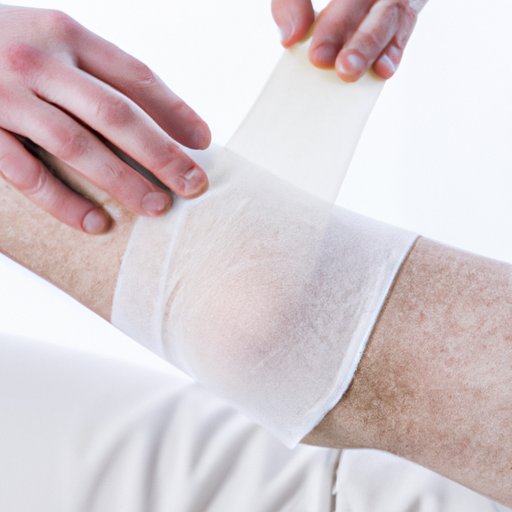
Introduction
Burns can happen to anyone at any time, and knowing how to properly and effectively treat them is crucial. Whether it’s a small burn caused by accidentally touching a hot stove, or a more serious burn caused by fire, electrical exposure, or chemicals, treating the burn appropriately can go a long way in promoting quick healing and reducing pain. In this comprehensive guide, we’ll cover basic first aid steps for treating burns, natural remedies that can be used to soothe burns, the do’s and don’ts of treating burn injuries, burn first aid kit essentials, how to soothe burn pain, and when to seek medical attention for a burn.
Basic First Aid for Burns: A Step-by-Step Guide
It’s important to first assess the severity of the burn. Burns can be classified as first-degree, second-degree, or third-degree burns, depending on their severity level.
- A first-degree burn affects only the outer layer of the skin
- A second-degree burn affects the outer layer and the layer underneath it
- A third-degree burn affects the deep layer of the skin and can cause permanent damage to tissues, muscles, organs, and bones
If it’s a first-degree burn, run cool water over the area for several minutes to help cool it down. Do not use ice or frozen water as they can cause further damage to the already injured skin. Once the area has cooled, cover it with a sterile, non-adhesive dressing and keep the affected body part elevated if possible.
For second-degree or third-degree burns, seek medical attention immediately. In the meantime, do not remove any clothing or jewelry stuck to the affected area. Cover the burn with a dry, sterile dressing and be careful not to apply any pressure to the affected area.
Managing pain is an important part of treating a burn injury. Over-the-counter pain relievers or prescription medications can be taken to reduce the pain. However, it’s important to follow the package instructions and only take the recommended dosage.
Top 5 Natural Remedies for Treating Burns at Home
In addition to using basic first aid steps and pain relievers, there are many natural remedies that can be used to soothe and promote healing of burns.
Aloe vera is a popular natural remedy for treating burns due to its anti-inflammatory properties. To use, simply apply aloe vera gel or ointment directly to the burned area.
Honey has natural antiseptic and antibacterial properties, making it an effective remedy for burns. Simply spread a thin layer of honey over the affected area and cover with a sterile dressing.
Coconut oil has healing properties and can help reduce inflammation. To use, apply a thin layer of coconut oil to the affected area.
Lavender oil has analgesic and antiseptic properties and can help soothe burned skin. Simply mix a few drops of lavender oil with a carrier oil, such as coconut oil or olive oil, and apply to the affected area.
Tea tree oil has natural antiseptic properties and can help prevent infection. Mix a few drops of tea tree oil with a carrier oil and apply to the affected area.
The Do’s and Don’ts of Treating Burn Injuries
In addition to knowing what to do, it’s important to know what not to do when treating burns. Here are some common mistakes to avoid:
- Do not apply ice or frozen water to the affected area as it can cause further injury
- Do not apply butter or ointments to the affected area as it can trap heat and make the burn worse
- Do not remove any clothing or jewelry stuck to the affected area
- Do not pop any blisters that may form as this can increase the risk of infection
In general, it’s important to keep the affected area clean and dry. Avoid exposing the burned area to the sun as it can damage the skin further.
Burn First Aid Kit Essentials: What You Need to Know
It’s a good idea to have a burn first aid kit on hand in case of emergency. Here are some important items to have in your kit:
- Sterile gauze pads
- Adhesive bandages
- Burn cream
- Pain relievers
Make sure to follow the instructions on the package of each item to properly use them when needed.
How to Soothe Burn Pain and Promote Healing
In addition to basic first aid steps and natural remedies, there are additional measures that can be taken to soothe burn pain and promote healing. Keeping the affected area clean and dry is important to prevent infections. Applying cold compresses to the affected area can also help reduce pain and inflammation. Over-the-counter pain relievers can be taken to reduce pain, but it’s important to follow the recommended dosage.
When to See a Doctor for a Burn: Signs You Can’t Ignore
While most burns can be treated at home with proper care and attention, there are certain signs that indicate the need for medical attention, such as:
- Deep or large burns
- Burns on the face, hands, feet, or genitals
- Burns that cause difficulty breathing or swallowing
If you experience any of these symptoms or are unsure about the severity of your burn, seek medical attention immediately.
Conclusion
Knowing how to properly treat burns is crucial in promoting quick healing and reducing pain. By using basic first aid steps, natural remedies, and pain management techniques, burns can be treated effectively at home. It’s important to also be prepared with a burn first aid kit and know when to seek medical attention if necessary. Remember to stay calm and take appropriate action in the event of a burn injury to promote a quick and comfortable recovery.





